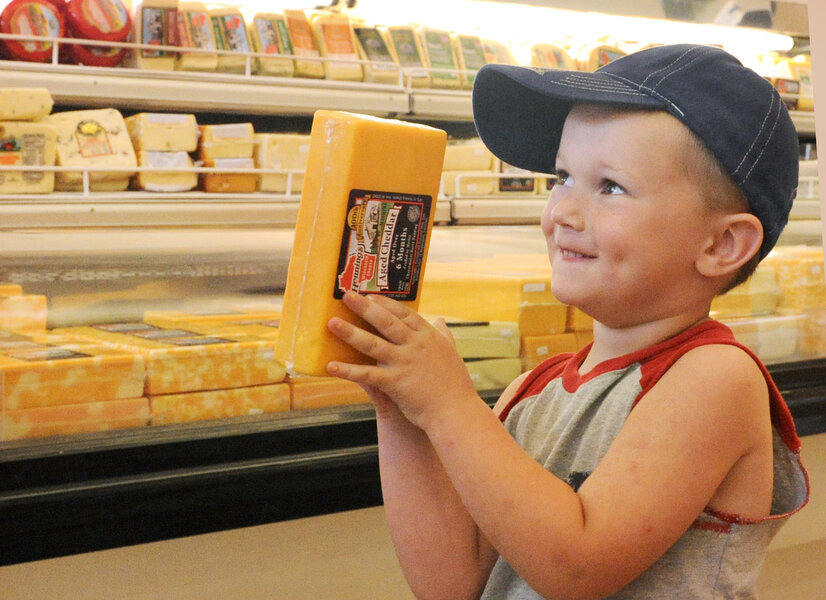Why the US government wants Americans to eat more cheese
Loading...
To help out America’s dairy industry by clearing out some of its surplus of cheese, a 30-year record, the U.S. Department of Agriculture on Wednesday said it would buy $20 million worth of the ripened milk curds to donate to food banks and pantries across the country.
That’s about 11 million pounds of cheese from a stockpile producers have been sitting on for several years, losing about 35 percent of their revenues.
The reason for the glut is that cheesemakers ramped up production a couple of years ago when high prices and opportunities to sell abroad seemed sound. At the time, the US was flush with grain, which lowered the cost for farmers to feed their livestock. This encouraged many of them to expand production by buying more milk-producing cows and building bigger barns.
But then the value of the dollar grew as the euro sank, so fewer international buyers wanted to buy American dairy. The economic conditions in the European Union also have caused dairy prices there to plummet, along with demand. This means European producers have been sending tons of cheap cheese, butter, and other dairy products here.
"Now we have a lot of products looking for a home in a smaller number of places," Shayle Shagam, a livestock analyst with the USDA, told The Wall Street Journal in May.
So the USDA has stepped in to help. Its purchase makes up less than 1 percent of the 1.3 billion pounds of mostly cheddar and mozzarella that's currently in storage in America, as NPR reports. But it also will give out $11.2 million in financial assistance to dairy producers.
This is not the first time the US government has stepped in to support the cheese industry. In the 1980s the government supported milk prices by buying huge amounts of dairy products. To deal with a surplus at that time, the US produced a processed cheese blended from several varieties that came to be known as "government cheese." It was distributed to welfare, food stamp, and Social Security recipients for free.
“At a time when American families are under increasing financial pressure, their government cannot sit by and watch millions of pounds of food turn to waste,” said then-President Ronald Reagan in 1981.
It’s not only the government that has the power to help clear out today’s glut, though. American consumers can help by eating an extra 3 pounds of cheese this year, the Journal estimates.








